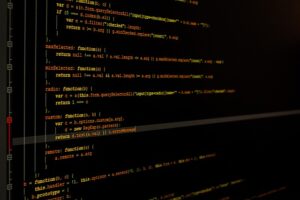Table of Contents
Do we really need to know JavaScript to learn React? How essential is JavaScript to build React apps? Is it possible to learn React without having strong knowledge of JavaScript? These are a few of the questions one may ask when embarking on a React learning journey.
React has become one of the most popular frameworks for developing user interfaces in recent years. While many developers flock to learn the framework, some would find themselves in a dilemma about how much JavaScript to learn in order to get up to speed. We now live in an age where frontend technology and web standards have drastically changed and become more complex due to ever increasing consumer demands. With the emergence of React has come an expectation to understand more about JavaScript in order to build applications and this has caused confusion and hesitation for aspiring learners.
In order to ensure a smooth experience when learning React, it is important to understand the necessary knowledge of JavaScript needed to develop a fully functional application. Knowing what JavaScript basics to focus on when starting out is crucial for any new React developer. It is the aim of this article to outline the minimum requirements and offer a guide for new React learners to help them start with the right foundation.
In this article, you will learn the absolute basics of JavaScript that are needed to create React applications, as well as how to integrate them with other components in the framework. Techniques on how to improve your knowledge of JavaScript to increase your React proficiency will also be discussed. We will also provide some guidance on when to further your JavaScript knowledge and the benefits of adding more JavaScript libraries to your arsenal. Finally, the article will outline the steps necessary to get up and running with React and start your journey to becoming a skilled React developer.The topic of the minimum JavaScript needed to learn React can be daunting for those who are not familiar with coding language. Fortunately, it doesn’t take a lot of programming skills to get started with React. Definitions of the key terms are below:
JavaScript – JavaScript is a high-level programming language used mainly to create dynamic and interactive websites.
React – React is a popular open-source JavaScript library used for developing user interfaces (UI).
Minimum – A minimum refers to the least amount that is needed in order to achieve something.
In terms of the the minimum JavaScript needed to learn React, the bare minimum is a basic knowledge of the language. Developers need to be able to understand variables, objects, functions, if statements, loops, and classes. Once a developer has a basic understanding of the language, they can move on to the more complex parts, like classes and the React library.
In order to use React effectively, developers will need to understand components, state, and props. Components refer to the building blocks of a React application. They are composed of HTML, CSS, and JavaScript code that allow developers to create a dynamic UI. State refers to a component’s internal data, such as text values, Booleans, arrays, and objects. Finally, Props refer to the data that is passed down from a parent component to a child component.
All in all, the minimum JavaScript needed to learn React is a basic knowledge of the language and the ability to understand components, state, and props. With a basic understanding of the language and some practice with React, developers can create dynamic and interactive web applications.
1. Overview of React and Basics of JavaScript
Introduction to React
React is a JavaScript library developed by Facebook for building user interfaces. It uses a component-based architecture which allows developers to create modularised and well-structured code. React components are reusable, meaning they can easily be modified and reused for different projects. React code is also easy to read and understand, making it a great tool for developers of all skill levels.
Basics of JavaScript
In order to understand and work with React, a basic understanding of JavaScript is necessary. JavaScript is a scripting language used on webpages to add interactivity and create dynamic user experiences. It is used within React code to manipulate data, define functions, create objects, and assign values. Additionally, JavaScript is based on an event-driven programming model, meaning code runs when a certain “event” — such as a user click or a mouse hover — is triggered.
React and JavaScript Working Together
React and JavaScript work together to create interactive user interfaces. JavaScript code is used to define where and how components appear on the web page, as well as creating components, manipulating data, and making API calls. React interacts with the browser, as well as other libraries and frameworks, to present the user with a fully functional website.
- React components are easy to read and understand
- JavaScript is used to create interactive user experiences on webpages
- JavaScript code is used to define and create components, manipulate data, and make API calls
- React and JavaScript work together to present the user with a fully functional website
2. Essential jQuery and DOM Manipulation for React
React is a popular JavaScript library used to build user interfaces, and mastering it is key to many front-end development roles. In order to work effectively with React, its essential to have a strong understanding of the underlying jQuery and DOM manipulation techniques.
Basic jQuery
Before learning React, it is important to have a good grasp of basic jQuery syntax. This includes understanding how to use selectors to target and manipulate elements, traversing the DOM, use of chaining, and the manipulation of events. Additionally, performing AJAX requests, creating plugins, and using the deferred and Promise objects is also necessary.
Manipulating the DOM
By using jQuery, the DOM can be modified in just about any way imaginable. This includes retrieving and changing the contents of DOM elements, setting attributes and css styles, and creating/updating elements. The skills learned here will be critical in understanding how React manipulates the DOM.
Finally, when working with React, you must also understand how to use the core APIs supplied with the library. Adequate knowledge of the component life cycle, state, props, and refs are important for the successful use of this powerful library. With a bit of practice and determination, you’ll be integrating jQuery and DOM manipulation into your React workflows in no time.
3. Popular JavaScript Libraries and Frameworks for React Development
Introduction to React Library
React is a JavaScript library used to create user interface for web applications. It allows you to create custom components that can be used to display data, receive input from users, and interact with other components. React provides a way to abstract the complexity of web application development from the developer, thus enabling developers to create powerful user interfaces. React is owned by Facebook and is one of the most popular libraries for front-end development.
Common Core Concepts in React
In order to use React, one must be familiar with the core concepts it employs. Components are the building blocks of React. Components can be used to create everything from user interfaces to complex data displays. React also uses the Virtual DOM, which allows data to be efficiently updated in the UI without reloading the page. Additionally, React supports a property called state, which is used to store information that is used by components in order to update or render.
Creating Interactivity with React
React uses events to enable users to interact with components. These events can be used to respond to user input such as mouse clicks or keypresses. Events are also used to update components with new data or perform other operations. Finally, React also makes use of Redux, which is a library used to manage application state. Redux is used to maintain the state of a React application across multiple components, thus making it easier to maintain large and complex applications.
React provides developers with a powerful tool for creating user interfaces, and while the library has a steep learning curve, its features are well worth the effort. In order to get started with React, one must be familiar with the core concepts of JavaScript and the library’s API. Furthermore, understanding the Virtual DOM, state, events, and Redux will enable developers to create powerful and interactive user interfaces.
Conclusion
.
The world of JavaScript can feel overwhelming, but what is the minimum needed to get started in React? In order to begin learning React, the basics of JavaScript such as variables, functions, and classes are important. It is also beneficial to have an understanding of object-oriented programming principles, and to be familiar with features available in modern browsers such as the fetch API or async/await.
For more insights into this topic, be sure to follow our blog and sign up for our newsletter. New releases are just around the corner and you don’t want to miss out!
Q1: How much prior JavaScript experience is necessary to learn React?
Having a basic understanding of variables, functions, and classes is a great starting point. Additionally, a familiarity with other concepts such as object-oriented programming and modern browser features will make learning React much easier.
Q2: What resources are available to help with learning React?
The internet is full of great resources to help you get up to speed quickly. There are plenty of tutorials, online courses, and blogs that can provide detailed insight and assistance along the way. Plus, there are also plenty of forums and other online communities available to help with any sticking points.
Q3: What is the most important thing to keep in mind while learning React?
Take it step by step. Don’t try to rush through, as understanding the fundamentals and practices of React is key to creating maintainable apps. There’s a lot to learn but React also has a variety of tools and features to help developers, so don’t get too overwhelmed.
Q4: I’m already familiar with JavaScript, what other topics should I learn to maximize my understanding of React?
In addition to JavaScript, having an understanding of React best practices and design patterns is invaluable. Learning things such as component lifecycle, hooks, and state management can help make development more efficient and maintainable.
Q5: What other technologies might I need to know in addition to React?
Many React developers use technologies such as Redux and GraphQL to help with state management, data fetching, and data management. Other popular technologies include TypeScript, Next.js, and Gatsby.js. Learning these technologies in addition to React can broaden your understanding and capabilities.

